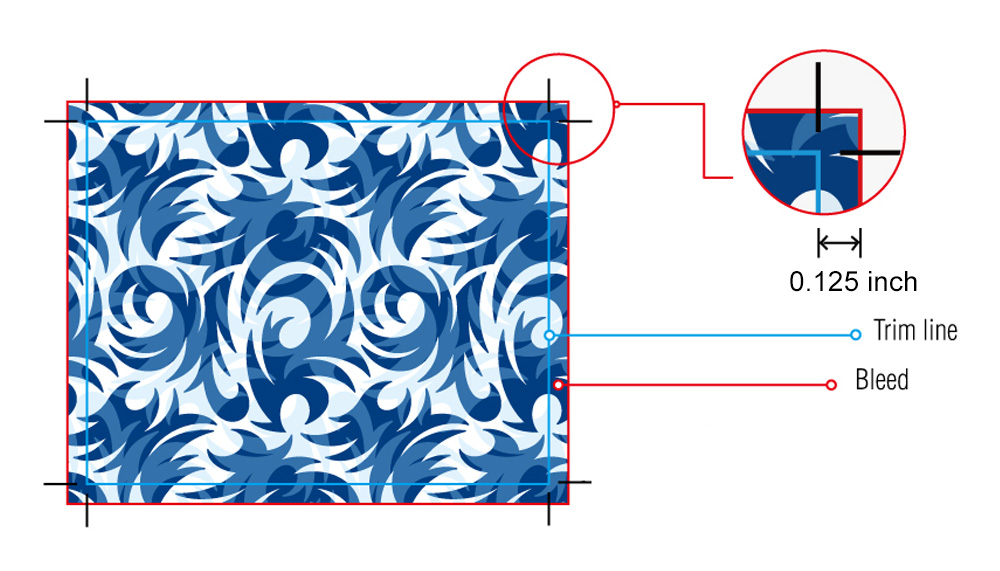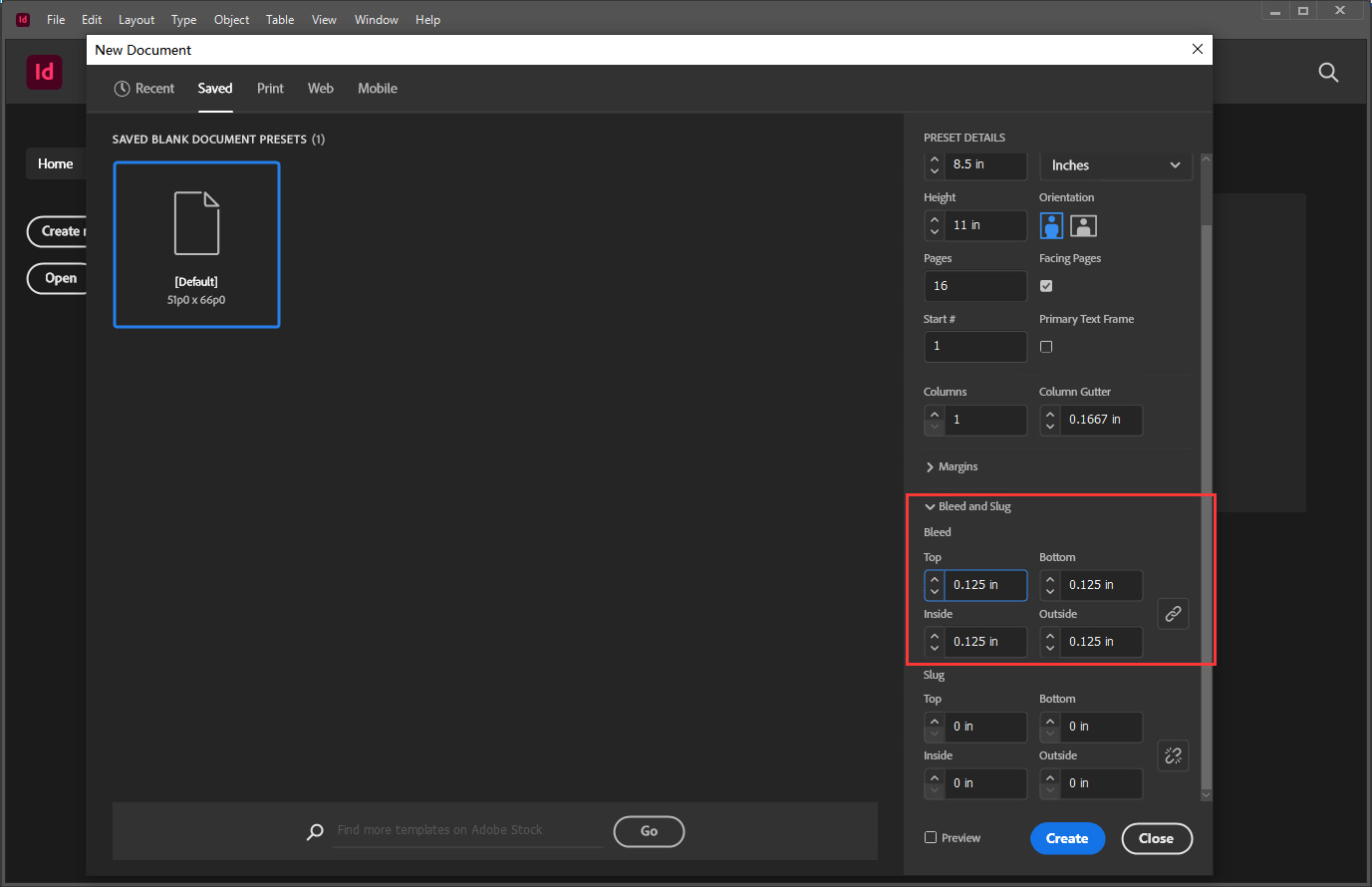Bleed in Printing
Wondering exactly what printers mean when we talk about “bleed”? In this helpful guide, we explain everything you need to know to prepare documents for printing with correct bleed

What Is Bleed in Printing?
Whenever you prepare a document for offset printing, it’s important to know what bleed is, why it’s important, and how to properly prepare your documents with the correct bleed margins. It’s a term that confuses many, but the concept is quite simple. Bleed is the area of your document that extends beyond the trim size, ensuring that no white edges are visible in the final product. Without this bleed zone, you’d be left with an ugly white border around your document. That’s why it’s so important to prepare your documents with the correct bleed margins because it ensures that the design will extend all the way to the edge of the paper without leaving any white space.
To prepare your documents properly, you should create a bleed zone, which marks out the extra space added to the edge of the artwork that will eventually be trimmed away. A typical bleed zone is 0.125″ from the edge of the page. When setting up your document, make sure to give every background colour or image a bleed zone so that there will be a seamless transition from the background to the edge of the paper. With the right bleed zone, your printed documents will have a professional, polished look that will leave a lasting impression.
What Is "Full Bleed?"
Bleed makes sure that your images fill the space they’re supposed to without any white space. However, not all images need to extend right to the edge of the page. When an image or background colour needs to cover the entire page, we call it “full bleed”.
How to Calculate the Bleed for Your Project
When you’re designing a print document, it’s important to know how to calculate the size of the bleed. If you don’t include the bleed, or you miscalculate it, you may risk important elements being trimmed away. This can ruin the look of the printed document and make it unusable. To calculate the bleed, you’ll need to know the final output size of the document you’re designing. Once you have that, add at least 0.125 inches to each edge.
For example, if your document is 3 x 4 inches, the bleed lines would be set at 3.25 x 4.25 inches because each side bleed is 0.125 inches on the top, bottom, left and right.
How to Add Bleed in Adobe InDesign, Illustrator, Photoshop, and QuarkXPress
Add Bleed in Adobe Illustrator
To add bleed margins in Illustrator, start by opening your artwork. Then, go to the “File” menu and select “Document Setup“. This will open the Document Setup window, where you can adjust the bleed for your artwork. Enter the desired bleed width in the corresponding field and click “OK”.
Add Bleed in Adobe InDesign
To add bleed margins in InDesign, open up your document and go to the File menu. Select “File” > “Document Setup” to open the “Bleed and Slug” panel. Here, you can set your bleed margins by entering the desired width into the “Top,” “Right,” “Bottom,” and “Left” fields.
Added Notes for Creating Bleed Margins with Page Spreads
- When you’re working with page spreads, you don’t need to add bleed between two pages.
- If you’re designing for wire-o or spiral binding, make sure that all four sides of every page have bleed zones; and remember that for these bindings, if you’re using InDesign, you can’t use the “facing page” option.
How to Export PDF Artwork with Bleed
How to Export PDFs with Bleed from Adobe Illustrator
How to Export PDFs with Bleed from Adobe InDesign
How to Export PDFs with Bleed from QuarkXPress
Three Examples of Incorrect Bleed
1. Add 0.125 inches of white space around the edges of the document or on one side
Always make sure the bleed zone extends 0.125 inches from the trim line and that the image or background goes over the trim line to the extent of the bleed area.
2. The artwork "floats" on the page
You must make sure that the artwork fits exactly to the dimensions of the artboard, canvas, or workspace. If not, even adding bleed, trim lines, and other marks won’t help. You have a perfect image reaching the end of the bleed, but it will be “floating” in white space. Always adjust the size of the entire document to fill the workspace before applying bleed margins.
3. The image looks great but the text has been cut off
If you’ve made a perfect bleed zone and extended your artwork correctly but forgotten about the text, you may have a perfect background image but the cut has trimmed away the ends of words or the text is not positioned well on the page. This can happen if you don’t separate the text and image into different layers. While the image or background colour should always reach the end of the bleed zone, the text must always be within the safe zone.
Need More Help? Talk to Us!
At QinPrinting, we pride ourselves on our first-class customer service. If you have any further questions about bleed or other crop markings, we’ve made it super easy for you to get in touch with our expert design team by telephone, via email, Skype, the chat box, or the contact form. Talk to us!

















































